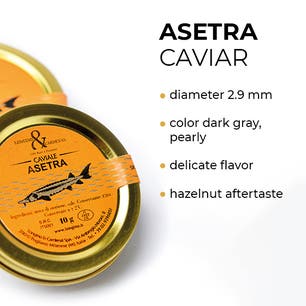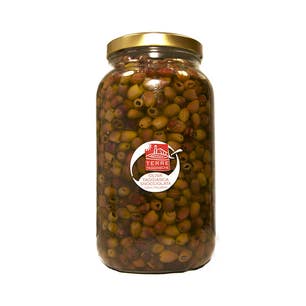Bluefin Tuna History
BLUEFIN TUNA
The history of Bluefin Tuna: the ultimate gourmet ingredient
Bluefin tuna, also known as "the king of the sea," has a fascinating history dating back millennia. This glorious fish, prized for its delicious and rich meat, has played a significant role in various cultures through the ages.
The earliest traces of bluefin tuna are found in the ancient Mediterranean. The Egyptians, for example, depicted it in their bas-reliefs and paintings, a sign of its prestige. The Greeks, on the other hand, celebrated it in their legends and myths, such as that of Glaucus, a fisherman transformed into a sea god after eating a magical herb and bluefin tuna.
However, it was the Romans who revered bluefin tuna as a true delicacy. The climax of this veneration was reached during the "cenae," daytime feasts where bluefin tuna was served as the main dish, topped with the famous "garum," a highly prized fish sauce.
Bluefin tuna has maintained its status even in the modern age, becoming a milestone of Mediterranean cuisine. Its rich and tasty meat is used in a wide range of dishes, from raw to cooked, from carpaccio to tartare, and even reaching its zenith in Japanese sushi and sashimi.
As trade routes expanded and preservation techniques evolved, bluefin tuna began to spread throughout the world. Today it is prized on every continent for its versatility and unique flavor. In Europe, for example, it is one of the most popular delicacies, while in Asia it is the undisputed star of sushi and sashimi.




The journey of bluefin tuna between tradition and innovation
Bluefin tuna, with its delicious and rich meat, is one of the most popular fish in the culinary world. But how did it achieve such wide global reach? This is the story of bluefin tuna's journey across continents.
Bluefin tuna has its origins in the Mediterranean, where it has been fished and consumed for thousands of years. This area has given rise to a rich culinary tradition revolving around bluefin tuna, with recipes that enhance its distinctive flavor and firm texture.
As trade routes expanded over the centuries, bluefin tuna began to travel, reaching new territories and conquering new palates. Innovative preservation techniques, such as salting and smoking, allowed bluefin tuna to maintain its freshness during these long journeys, facilitating its spread.
In Europe, bluefin tuna has a special place. It is highly valued in the Mediterranean countries, where it is used in a wide range of traditional dishes. Countries such as Italy, Spain, and Greece have developed unique cooking techniques to enhance the flavor of bluefin tuna, from using it raw in carpaccios and tartare to grilling or baking it.
But it is in Asia that bluefin tuna has found its greatest expression. In Japan, for example, it is considered the undisputed king of sushi and sashimi. The delicacy and respect with which Japanese chefs handle bluefin tuna reflect the high regard in which this fish is held in this culture. It is also a constant presence in Korean and Chinese cuisine, where it is used in a range of innovative and traditional dishes.


From the Mediterranean to Asia: a gastronomic journey
Bluefin tuna, a fish with ancient origins, has now become one of the undisputed protagonists of the modern culinary scene. Its presence in kitchens around the world is a testament to its versatility and unmistakable flavor. But what is the role of bluefin tuna in modernity?
Bluefin tuna is one of the most sought-after ingredients in the culinary world. Its delicious, high-quality meat makes it a prestige item on any menu. It is widely used in a wide range of dishes, from the most traditional to the most innovative, including fusion and haute cuisine.
In Mediterranean cuisine, bluefin tuna is a mainstay. In Italy, it is often served raw in salads, carpaccio or tartare, or cooked in sauces or grilled. In Spain, it is the star of "ventresca de atún," a delicacy made from the fattest and most flavorful part of the tuna.
But it is in Asia that bluefin tuna finds its greatest expression. In Japan, it is the star of sushi and sashimi, dishes that enhance its freshness and delicate flavor.
In modern times, the issue of the sustainability of bluefin tuna has become a major concern. Its popularity has led to overfishing, putting its survival at risk. It is critical to promote sustainable and responsible fishing practices to ensure the preservation of bluefin tuna for future generations.
The future of bluefin tuna in modernity is linked to the ability to balance demand with sustainability. New farming techniques, such as fish farming, are emerging as potential solutions.


Fishermen's secrets: how to maintain tuna quality
Bluefin tuna is one of the most prized and valued fish in the world, and its unique flavor and texture are largely due to the techniques used by fishermen to catch and preserve it. But what are the fishermen's secrets for preserving the quality and deliciousness of bluefin tuna?
The first secret lies in choosing the right time for fishing. Bluefin tuna should be caught when it is at its best, which is during the bluefin tuna fishing season that generally runs from May to October in the Mediterranean. During this period, bluefin tuna has accumulated a considerable layer of fat, which gives its meat a particularly delicious flavor and texture.
The catching of bluefin tuna is an art itself. Experienced fishermen use traditional fishing techniques, such as trolling or longline fishing, which cause less stress to the fish and thus preserve the quality of its meat. Once caught, bluefin tuna must be immediately chilled to maintain its freshness.
Discover the products and pairings
Longino & Cardenal
Longino & Cardenal stands today as one of Italy's leading "food globetrotters." With passion and courage it carries out a continuous search for the best raw materials, often little known to most, in order to meet the new trends in consumer behavior that seek excellent products proposed in innovative forms. Delivery of products is expected in 48/72 hours from the order if the product is already in stock. All our deliveries use specialized, refrigerated couriers.











